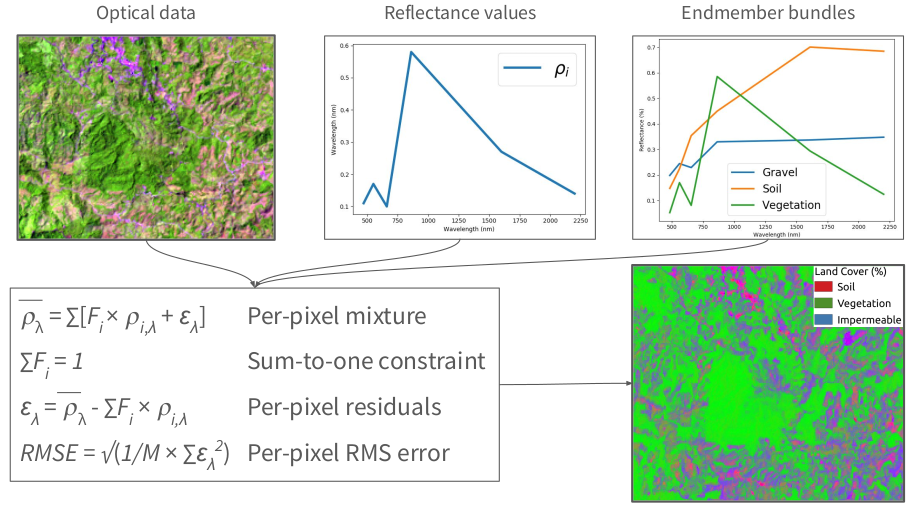Spectral Mixture Analysis¶
The contents of a satellite image pixel are rarely homogeneous. An area 30x30m in size can include buildings, trees, and roads in urban environments; grasses, soils, and char in recently burned landscapes; trees, gaps, and downed logs in forested areas. These patterns all affect the reflectance patterns measured by satellites, and it's important to be able to estimate the sub-pixel abundances of each of these land cover types.

Spectral mixture analysis is an approach to estimating the sub-pixel contents of an image pixel based on a set of representaive reflectance spectra (i.e., a reference library). Linear spectral mixture analysis uses an iterative, least-squares fitting approach to estimate the proportions of land cover types based on observed reflectance measurements. In order to run these analyses, you need 1) a high quality reference library of different land cover types, and 2) to resample these reference data to the wavelengths of the instrument you plan to analyze.
To support these analysise, earthlib provides a rich spectral library with thousands of labeled reference spectra and tools for working with common satellite instruments.